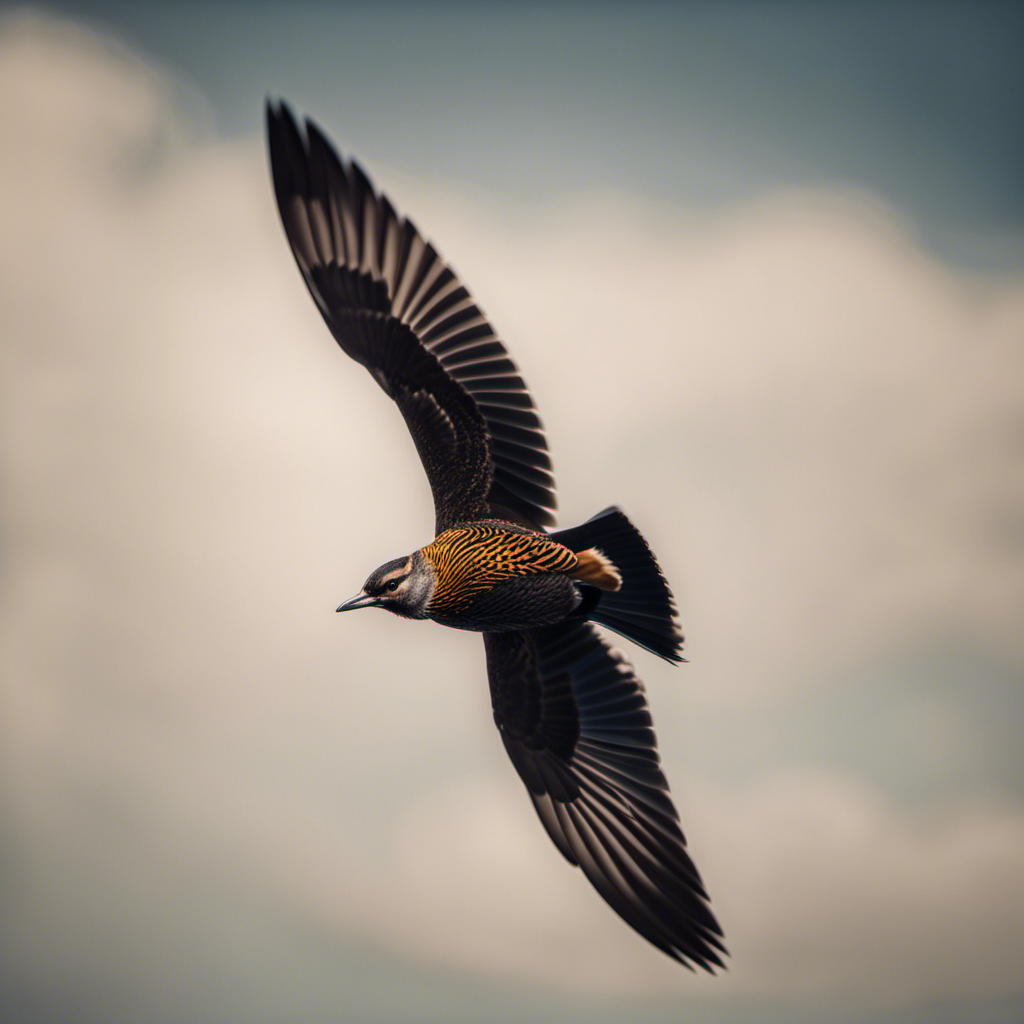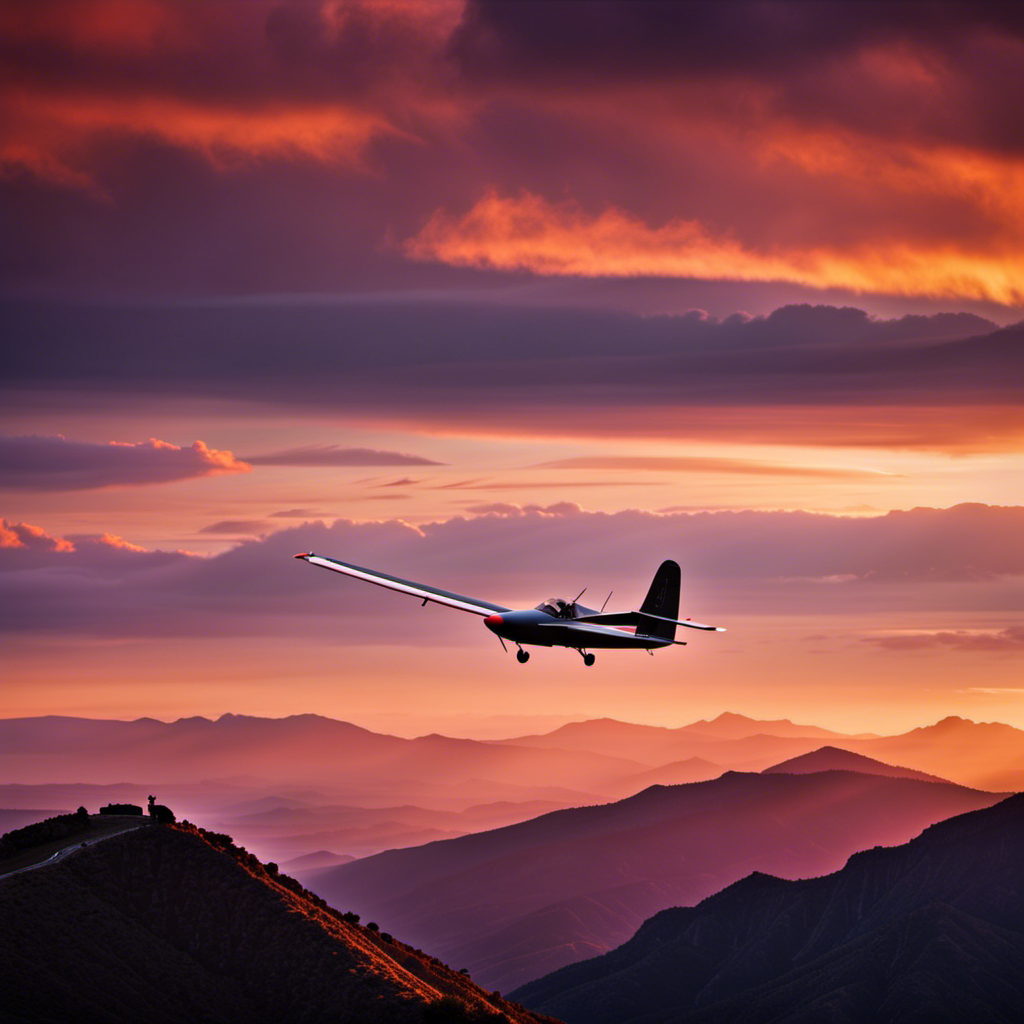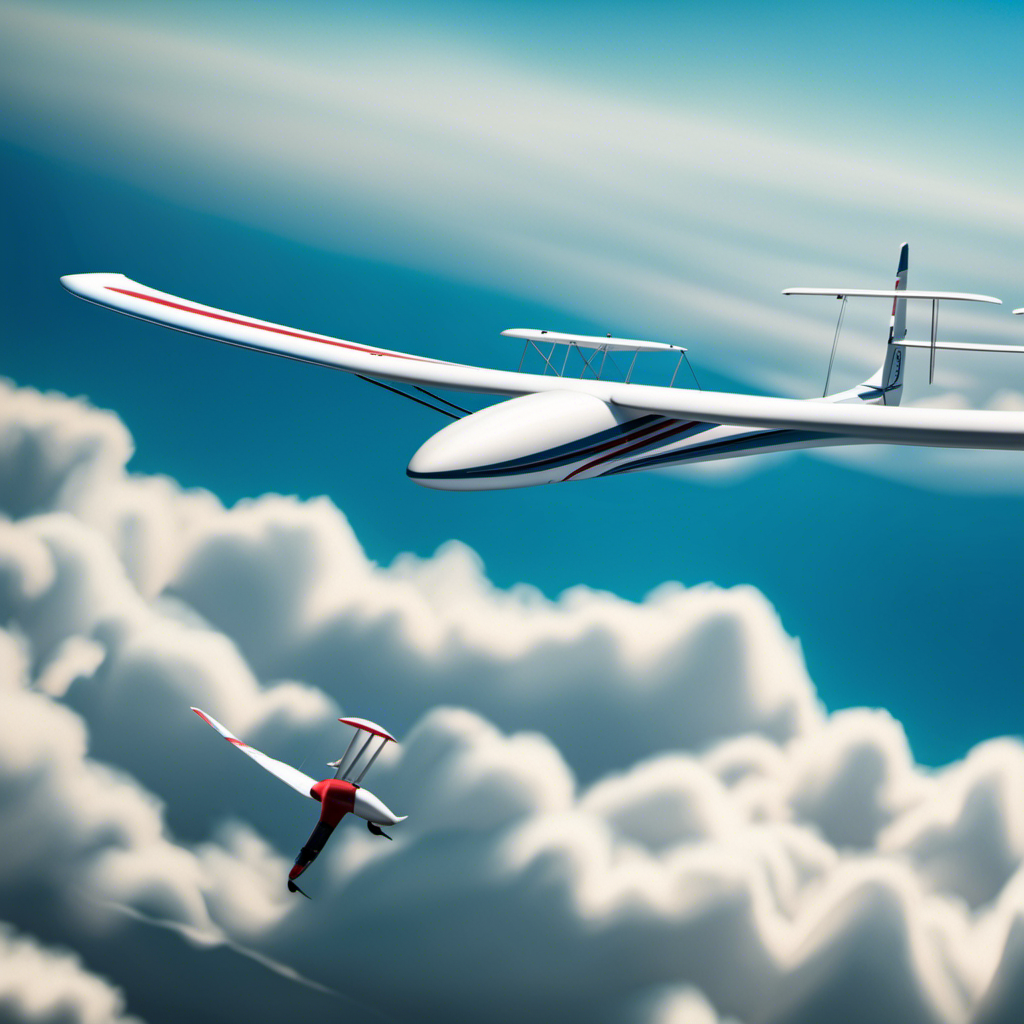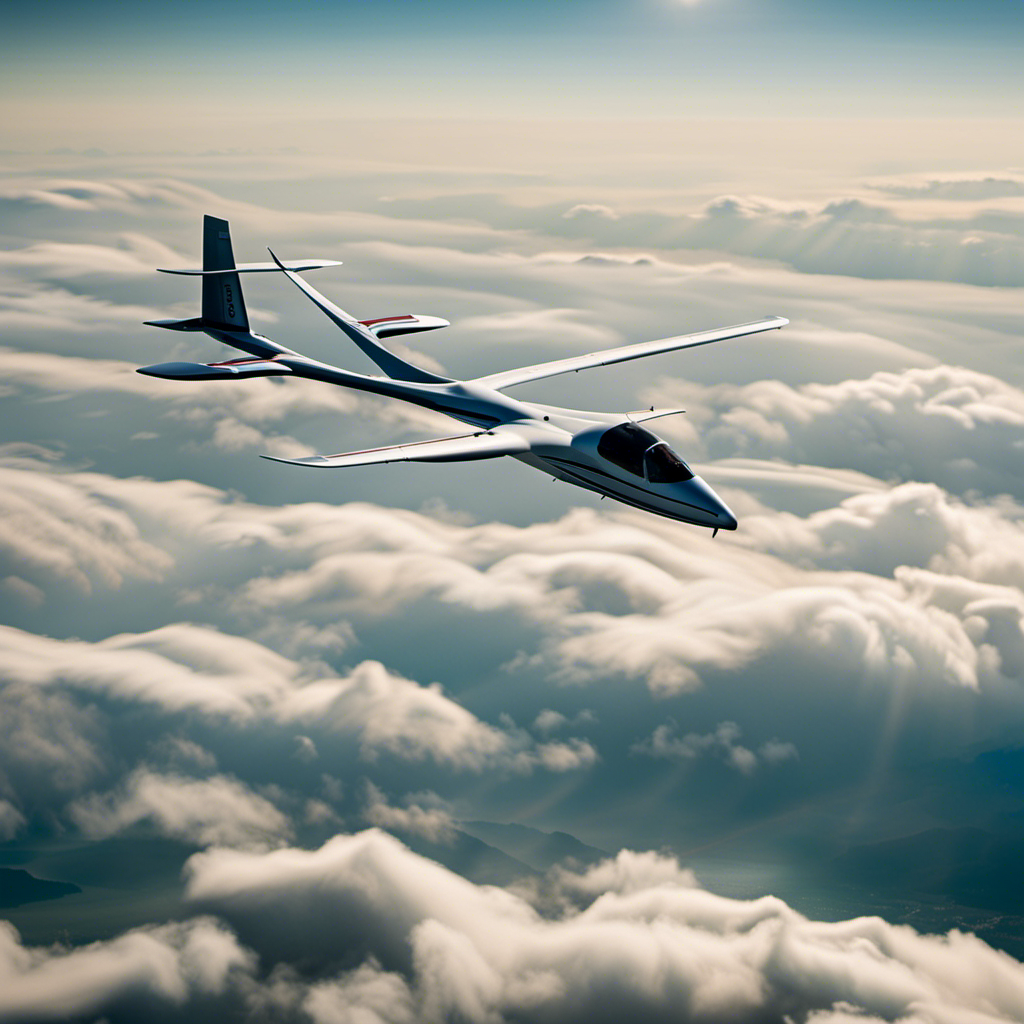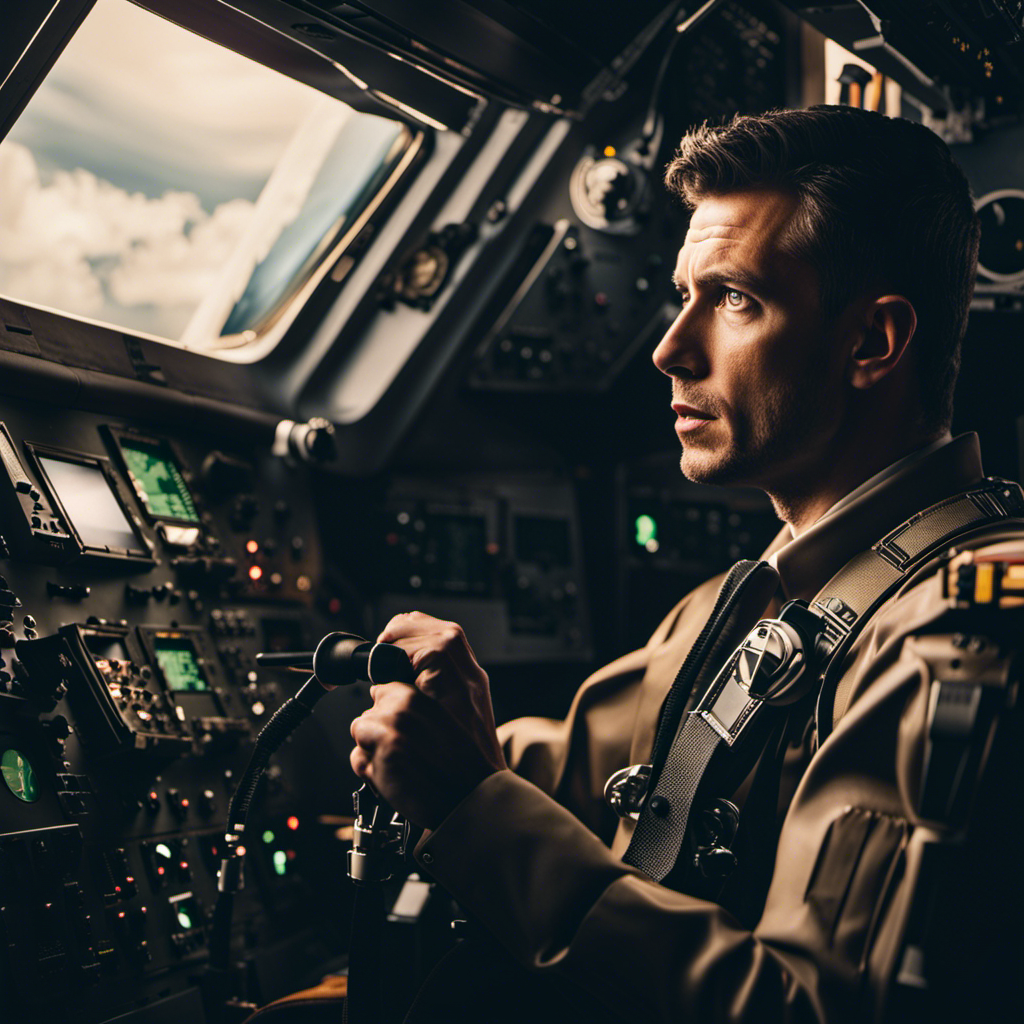As a dedicated glider enthusiast, I often wonder: has gliding ever been a part of the Olympics? The juxtaposition of the tranquil, quiet flight of gliders against the backdrop of the world’s most prestigious sports event is truly captivating.
In this article, we will delve into the origins of gliding as a sport, explore its brief appearance as a demonstration sport in the 1936 Berlin Olympics, examine the challenges of including gliding in the Olympic program, and analyze the impact of gliding’s Olympic connection on its popularity as a niche sport.
Key Takeaways
- Gliding has a strong presence in World Gliding Championships, showcasing the skills of the best glider pilots from around the world.
- Technological advancements in gliding have allowed pilots to achieve greater distances and speeds, with sleeker and more aerodynamic glider designs and advanced navigation systems.
- Olympic recognition for gliding would bring increased exposure and visibility, attracting new athletes and enthusiasts to the sport.
- Gliding has a long-standing history and enduring appeal as both a competitive sport that demands excellence and a recreational activity that offers a unique experience of soaring through the skies.
The Origins of Gliding as a Sport
Did you know that gliding as a sport originated in the early 20th century?
The origins of gliding can be traced back to the pioneering work of individuals like Otto Lilienthal and the Wright brothers. Lilienthal, a German aviation pioneer, conducted extensive research and experiments on glider designs in the late 1800s. His contributions laid the foundation for gliding as a recreational and competitive sport.
In the early 1900s, gliding competitions started to gain popularity in countries like Germany and France. These competitions provided a platform for glider pilots to showcase their skills and push the boundaries of aviation.
The early gliding competitions not only contributed to the development of glider technology but also paved the way for gliding to be considered as a demonstration sport in the 1936 Berlin Olympics.
The 1936 Berlin Olympics: Gliding as a Demonstration Sport
During the 1936 Berlin Olympics, gliding was showcased as a demonstration event. This inclusion of gliding in the Olympic program was significant in the history of the Games.
Gliding, also known as soaring or sailplane flying, involves piloting unpowered aircraft using the natural air currents. Its inclusion in the Olympics brought attention to this unique sport and introduced it to a wider audience.
Gliding demonstrated the skill and precision required to navigate the skies, showcasing the human capability for flight without the use of engines. This event paved the way for the eventual inclusion of gliding as an official Olympic sport, highlighting the diverse range of disciplines that can be celebrated within the Games.
Now, let’s explore the challenges that gliding, as a sport, faces in being fully integrated into the Olympic program.
Gliding vs. Other Olympic Sports: The Challenges of Inclusion
In order to be fully integrated into the Olympic program, gliding faces various challenges that other sports don’t encounter. One of the main challenges is the inclusion of gliding athletes from diverse backgrounds. Representation issues arise when considering the accessibility and affordability of gliding as a sport. Unlike more popular Olympic sports, gliding requires specialized equipment and training, which can be costly and limiting. Additionally, the lack of gliding facilities in certain regions further exacerbates the inclusion challenges. To illustrate this point, consider the following table:
| Challenges of Inclusion in Gliding |
|---|
| Limited accessibility and affordability |
| Lack of representation from diverse backgrounds |
| Inadequate gliding facilities |
These factors contribute to the underrepresentation of gliding athletes in the Olympic program. Despite these challenges, advancements in technology have played a crucial role in gliding competitions.
The Role of Technology in Gliding Competitions
Advancements in technology have played a crucial role in the competitiveness of gliding competitions. In particular, the continual advancements in glider design have greatly enhanced the performance and aerodynamics of gliders, allowing pilots to achieve greater distances and speeds. These advancements include the use of lightweight materials, improved wing designs, and more efficient control systems.
Additionally, the use of GPS technology for navigation has revolutionized gliding competitions. Pilots can now accurately track their position, plan optimal routes, and make strategic decisions based on real-time weather and wind data. This has not only improved safety but also allowed for more precise navigation and enhanced competition among pilots.
With these technological advancements, gliding competitions have become more challenging and exciting, pushing pilots to their limits and driving the sport forward. As a result, gliding has gained a dedicated global community of enthusiasts who are passionate about the sport’s unique blend of technology, skill, and adventure.
Gliding as a Niche Sport: The Global Community of Enthusiasts
The global community of gliding enthusiasts has grown significantly due to the sport’s unique blend of technology, skill, and adventure. As an avid glider myself, I have witnessed the passion and camaraderie that exists within this community.
Gliding competitions are a major highlight, bringing together pilots from all over the world to showcase their skills and push the boundaries of the sport.
Gliding clubs serve as the backbone of this community, providing a space for enthusiasts to come together, share knowledge, and support each other’s endeavors. Being part of a gliding club not only offers access to resources and facilities but also fosters a sense of belonging and friendship.
With such a strong community, it is not surprising to consider the potential for gliding to become an Olympic sport in the future. The gliding community’s dedication and love for the sport could pave the way for its inclusion on the global stage.
The Potential for Gliding to Become an Olympic Sport in the Future
As gliding continues to grow in popularity among enthusiasts around the world, there is a potential for it to become an Olympic sport in the future. However, this transition would come with its own set of challenges and considerations. One of the main challenges would be the limited accessibility of gliding as compared to other sports. Gliding requires specialized equipment and facilities, which may not be readily available in all regions. Additionally, the cost associated with gliding can be prohibitive for many potential participants. Technological advancements in gliding, such as the development of more affordable and accessible equipment, could help address these challenges. Improved safety measures and training programs would also be crucial to ensure the well-being of athletes. Overall, while there are potential challenges, the technological advancements in gliding have the potential to pave the way for its inclusion in the Olympics.
| Potential Challenges | Technological Advancements |
|---|---|
| Limited accessibility | Development of affordable and accessible equipment |
| High cost | Improved safety measures and training programs |
The impact of gliding’s Olympic connection on the sport’s popularity…
The Impact of Gliding’s Olympic Connection on the Sport’s Popularity
With gliding potentially becoming an Olympic event, its popularity could reach new heights. The impact of gliding’s Olympic connection on the sport’s popularity cannot be underestimated. The Olympics are one of the biggest global sporting events, attracting millions of viewers from around the world. If gliding were to be included, it would garner significant attention and exposure, leading to a surge in interest and participation.
This increased popularity would have a positive impact on tourism, as enthusiasts and spectators would flock to gliding hotspots to witness the sport firsthand. Additionally, there would be economic benefits, with increased revenue from tourism, sponsorship deals, and merchandise sales. Gliding’s Olympic connection would undoubtedly elevate the sport’s status and open up exciting opportunities for growth and development.
Moreover, gliding has already made its presence felt in other international competitions.
Gliding’s Presence in Other International Competitions
As we have seen, the connection between gliding and the Olympics has had a profound impact on the popularity of the sport. However, gliding’s presence extends far beyond the Olympic Games.
The sport has a strong presence in other international competitions, such as the World Gliding Championships. These championships bring together the best glider pilots from around the world to compete in a variety of disciplines.
Over the years, gliding technology has evolved significantly, allowing pilots to achieve greater distances and speeds. Advancements in materials, design, and instrumentation have revolutionized the sport, making it more accessible and exciting. From sleeker and more aerodynamic glider designs to advanced navigation systems, gliding has truly embraced technological advancements.
This ongoing evolution has contributed to the continued growth and success of gliding in international competitions.
Transitioning into the subsequent section about the benefits and drawbacks of Olympic recognition for gliding, it is important to consider the impact of such recognition on the sport’s future.
The Benefits and Drawbacks of Olympic Recognition for Gliding
One of the benefits of Olympic recognition for gliding is the increased exposure and visibility it brings to the sport. The Olympics are a global event that captures the attention of millions of people around the world. By including gliding as an official Olympic sport, it would gain widespread recognition and garner more attention from the public. This exposure can lead to increased participation and interest in gliding, attracting new athletes and enthusiasts to the sport. Additionally, Olympic recognition would provide gliding with a platform to showcase its unique skills and challenges to a larger audience.
However, there are also drawbacks to Olympic recognition for gliding. The sport would need to conform to the rules and regulations set by the International Olympic Committee (IOC), which could potentially alter the essence of gliding. It might require changes to the competition format or equipment used, which could affect the authenticity and traditions of the sport. Furthermore, Olympic recognition may also lead to commercialization and the influx of sponsorship deals, which could lead to a shift in priorities from the purity of the sport to financial gain.
Transitioning into the subsequent section about the continued legacy of gliding as a competitive and recreational activity, it is important to consider the long-standing history and enduring appeal of the sport.
The Continued Legacy of Gliding as a Competitive and Recreational Activity
The enduring appeal of gliding as a competitive and recreational activity is evident in its long-standing history. The legacy of gliding dates back to the late 19th century, when pioneers like Otto Lilienthal and the Wright brothers pushed the boundaries of flight.
Today, gliding continues to captivate enthusiasts around the world. As a competitive sport, gliding demands skill, strategy, and precise navigation. Pilots compete in various disciplines, such as distance flying, aerobatics, and speed challenges.
On the recreational side, gliding offers a unique and exhilarating experience. It allows individuals to soar through the skies, relying solely on the forces of nature. Gliding clubs and organizations provide opportunities for people to learn, practice, and enjoy the sport.
The legacy of gliding as both a competitive and recreational activity remains strong, attracting individuals who seek adventure, challenge, and a close connection with the elements.
Frequently Asked Questions
How did gliding as a sport originate?
Gliding as a sport originated in the early 20th century with the Wright brothers’ successful flight. Over time, it evolved into a competitive activity with the establishment of gliding clubs and the development of advanced glider designs.
What was the role of gliding in the 1936 Berlin Olympics?
The role of gliding in the 1936 Berlin Olympics was significant. It was the first and only time gliding was included as a demonstration sport. This highlighted the importance of gliding in Olympic history.
How does gliding compare to other Olympic sports in terms of challenges?
Gliding challenges are like navigating a treacherous mountain path in a delicate dance with the wind. Compared to other sports, gliding requires a unique blend of technical skill, strategy, and adaptability to ever-changing conditions.
How has technology influenced gliding competitions?
Technology has greatly influenced gliding competitions. Virtual simulations allow for realistic training and preparation, while drone technology provides advanced aerial footage for analysis. These advancements enhance the sport and help athletes improve their skills.
What is the global community of gliding enthusiasts like?
The global community of gliding enthusiasts is a passionate and close-knit group. We come together to share our love for gliding, exchange knowledge and experiences, and support each other in this exhilarating sport.
Conclusion
In conclusion, gliding’s Olympic aspirations have been a rollercoaster of hope and heartbreak. While the sport has yet to secure a permanent place on the Olympic stage, its presence as a demonstration sport in 1936 showcased the grace and skill of gliders.
Despite facing challenges of inclusion and the niche nature of the sport, gliding continues to thrive within its global community of enthusiasts. Olympic recognition may bring benefits, but the legacy of gliding as a competitive and recreational activity remains strong, soaring through the skies with a spirit of passion and perseverance.
With a heart that soars as high as the skies, Aria, affectionately known as “Skylark,” is the driving force behind Soaring Skyways. Her journey into the gliding world began as a young dreamer gazing up at the soaring birds, yearning to experience the weightlessness and freedom they embodied. With years of experience both in the cockpit and behind the scenes, Aria’s commitment to the gliding community is unwavering.

